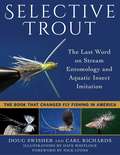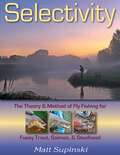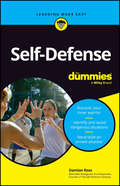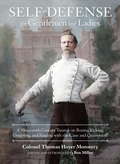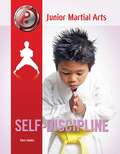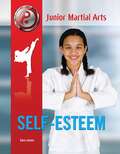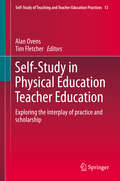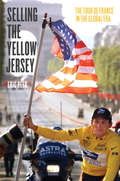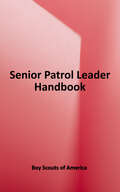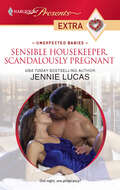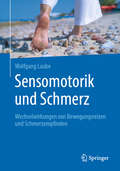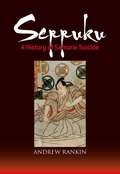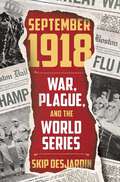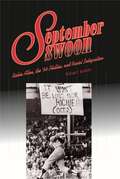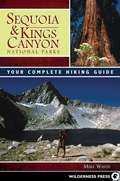- Table View
- List View
Selection Day: A Novel
by Aravind AdigaManju is fourteen. He knows he is good at cricket -- if not as good as his elder brother Radha. He knows that he fears and resents his domineering and cricket-obsessed father, admires his brilliantly talented brother and is fascinated by CSI and curious and interesting scientific facts. But there are many things, about himself and about the world, that he doesn't know . . . Everyone around him, it seems, has a clear idea of who Manju should be, except Manju himself. But when Manju begins to get to know Radha's great rival, a boy as privileged and confident as Manju is not, everything in Manju's world begins to change and he is faced by decisions that will challenge both his sense of self and of the world around him. As sensitively observed as The White Tiger -- Winner of the Man Booker Prize 2008 -- was brilliantly furious, Selection Day reveals another facet of Aravind Adiga's remarkable talent.
Selective Trout: The Last Word on Stream Entomology and Aquatic Insect Imitation (Lyons Press Ser.)
by Nick Lyons Carl Richards Dave Whitlock Doug SwisherWhen it was originally published in 1971, Selective Trout was universally acclaimed as the most revolutionary approach to aquatic insect imitation in the twentieth century. Using common sense, science, and imagination, authors Doug Swisher and Carl Richards developed a wide array of new patterns that were in sharp contrast to those offerings used by American fly fishermen up to that time. Their radical no-hackle dry fly, in particular, proved to be a more convincing, natural silhouette than anything anglers had ever seen before. With hatch charts covering different regions of the country, and featuring detailed tying instructions for flies that could be used in those regions, all liberally illustrated, the book provided anglers with a new arsenal of deadly fly patterns. Thirty years later, and after more than 200,000 copies of the first edition had been sold, a Thirtieth Anniversary Edition was brought out. Updated and revised by the authors, with new observations on trout behavior as well as detailed instructions on how to keep useful fishing logs, the book also featured detailed appendices on terrestrials, mayflies, caddisflies, and stoneflies. Not only that, but the new edition included hundreds of color illustrations by the renowned artist and fly-fishing innovator Dave Whitlock. It’s hard to imagine how anything could top that. In this new paperback edition of Selective Trout we know that we can’t top what’s been done previously. But we do know that this deserves to stay in print, because it’s the type of book that every fly fisherman should own and read. To add a new twist to this new edition, what we have done is added a new introduction by Doug Swisher (Carl Richards passed away in 2006), plus a new foreword by Nick Lyons, the book publisher who had the foresight to get behind the book in the first place.
Selectivity
by Matt SupinskiWow. What a book and what an undertaking. This should be a must-read for the most exacting fly fisherman. I would guess that it will be one of the most important reference volumes ever written. It should be read and re-read many times.--Ed Shenk, author of Ed Shenk's Fly Rod Trouting
Self-Defense (Junior Martial Arts #9)
by Sara JamesMartial arts students don't just learn how to fight. They also learn lots of other important things--like how to defend themselves. All martial arts teach you self-defense. But martial artists also learn when to use these moves--and when not to use them. They know that martial arts actually lead to less fighting! Discover how martial arts can help you defend yourself too!
Self-Defense For Dummies
by Damian RossGet street-smart. Unleash your inner warrior. Forget everything you thought you knew about self-defense. Those graceful martial arts moves that are so effective in the movies are likely to get you killed on the street. In fight-or-flight mode, you won’t have the calm thinking and fine motor skills to execute them. You need a simpler approach with a few fundamental moves that are easy to remember and perform yet devastating to an attacker. The solution? Self-Defense For Dummies, your guide to avoiding attacks, neutralizing attackers, and protecting yourself and your loved ones. In this book, you discover a self-defense system that works in the real world, where armed criminals target the most vulnerable and don’t fight fair. Discover strategies to make yourself a hard target, as opposed to an easy one Heighten your awareness of your surroundings and potential threats Sharpen your self-defense instincts and respond proactively to impending danger Master hand-to-hand combat basics and defend against grabs and holds Learn how to use weapons and defend against them
Self-Defense for Gentlemen and Ladies
by Ben Miller Colonel Thomas MonsterySelf-Defense for Gentlemen and Ladies is the treatise of Colonel Thomas Hoyer Monstery, a master swordsman who participated in more than fifty duels, fought under twelve flags, battled gangsters, and was constantly involved in the great conflicts and upheavals of his time. This book is the magnum opus of this remarkable and colorful character, originally published in the 1870s as a series of newspaper articles and collected here for the first time. Colonel Monstery presents a unique look into the Victorian-era fighting world, describing styles such as British "purring" (shin-kicking), Welsh jump-kicking, and American rough-and-tumble fighting, and provides illustrated instruction in the art of gentlemanly self-defense with a cane, staff, or one's bare hands. Fifty rare drawings and photographs from the period illuminate Monstery's world, while an extensive glossary of terms and an introductory biography of Colonel Monstery--including fascinating details of his many duels as well as his groundbreaking devotion to teaching fencing and self-defense skills to women--update his text to make it accessible and useful to gentlemen and ladies of any era.CONTENTSColonel Thomas Hoyer Monstery: The Unknown American Martial Arts MasterI. Introduction.II. The Logic of Boxing.III. Standing and Striking.IV. Advancing to Strike and Feinting.V. Simple Parries in Boxing.VI. Parries with Returns.VII. Effective or Counter Parries in Boxing.VIII. Offence and Defense by Evasions.IX. Trips, Grips, and Back-Falls.X. Rules for a Set-to with Gloves.XI. Observations on Natural Weapons.XII. The Use of the Cane.XIII. The Use of the Cane (continued).XIV. The Use of the Staff.XV. The Use of the Staff (continued).Appendix: Monstery's Rules for Contests of Sparring and FencingGlossaryFrom the Hardcover edition.urns.VII. Effective or Counter Parries in Boxing.VIII. Offence and Defense by Evasions.IX. Trips, Grips, and Back-Falls.X. Rules for a Set-to with Gloves.XI. Observations on Natural Weapons.XII. The Use of the Cane.XIII. The Use of the Cane (continued).XIV. The Use of the Staff.XV. The Use of the Staff (continued).Appendix: Monstery's Rules for Contests of Sparring and FencingGlossaryFrom the Hardcover edition.
Self-Discipline (Junior Martial Arts #9)
by Sara JamesMartial arts students don't just learn how to fight. They also learn lots of other important things they use every day--like self-discipline, for example. Self-discipline is what keeps us going, even when it's hard work. Martial artists learn this skill, and it helps them with everything from studying for a test . . . to practicing an instrument . . . to playing sports. Discover how martial arts can help you learn self-discipline too!
Self-Esteem (Junior Martial Arts #9)
by Sara JamesMartial arts students don't just learn how to fight. They also learn lots of other important things they use every day--like self-esteem, for example. Martial arts students feel better about themselves because they are learning new things; they are hearing encouragement; and they are reaching their goals, so they feel like a success. Self-esteem helps them do better in school, at home, and with friends. Discover how martial arts can improve your self-esteem too!
Self-Study in Physical Education Teacher Education
by Alan Ovens Tim FletcherIn this in-depth examination of self-study as a research methodology, an international selection of physical education scholars share their ideas and experiences and consider the value of self-study as a vector for highlighting the emerging conflicts, dilemmas, and debates currently developing in teaching and teacher education pedagogies. A vital new addition to Springer's series Self-Study of Teacher Education Practices, the volume is divided into three sections assessing the significance of the approach itself, offering detailed subject-relevant case studies, and exploring the nuances and controversies attending the evolution of the methodology. The contributors show how self-study enables reflexivity in pedagogical practice, a notable lacuna in current critical research, and at the same time they make the technique accessible to scholars of physical education wanting a practicable introduction to the subject. The analysis also explores the implications of applying self-study to pedagogy itself, to the curriculum, and to human movement and educational practice more generally. By embracing more organic, emergent notions of research practice and learning, the book achieves a broader and more inclusive survey of pedagogical work in physical education teacher education that fully acknowledges the complexities of the field.
Self-talk in Sport (Routledge Psychology of Sport, Exercise and Physical Activity)
by Alexander T. Latinjak Antonis HatzigeorgiadisAthletes are naturally exposed to significant psychological challenges in sports, but do not wait helplessly for the assistance of sports psychologists or trainers. Instead, they practise one form or another of self-regulation. Self-talk in Sport explores one such self-regulatory strategy: self-talk, the inner voice that accompanies every human being throughout their lives. Over time, research has revealed many secrets of self-talk in sport, though many others remain unveiled. This book offers you the opportunity to discover the multiple identities of our self-talk, how the “inner coach” serves as a rational counterpart to the irrational self, and what we need to do to develop our inner voice to reach its maximum self-regulatory potential. There is a general need for concrete interventions in sport, exercise, and performance psychology. In addition, the autonomous functioning of people is a central aim of psychological interventions that align with positive psychology and focus on people’s strengths rather than weaknesses. In this volume, researchers and applied practitioners are shown how they can use self-talk interventions to strengthen people’s rational self-regulation in order to deal with a variety of situations that apply to both sport and other exercise and performance contexts. Since self-talk is a tangible result of cognitive processes and inner experiences that researchers and applied practitioners can barely access, Self-talk in Sport is a tool for sports psychologists to understand and interact with hidden parts within athletes that have a major impact on sport and exercise experiences and performance. A book demonstrating the diverse – both rational and irrational identities – of self-talk, as well as specific interventions to change the inner dialogue of athletes, is a fundamental piece in the education of sport scientists.
Selling the Yellow Jersey: The Tour de France in the Global Era
by Eric ReedYellow Livestrong wristbands were taken off across America in early 2013 when Lance Armstrong confessed to Oprah Winfrey that he had doped during the seven Tour de France races he won. a But the foreign cycling world, which always viewed Armstrong with suspicion, had already moved on. The bellwether events of the year were Chris FroomeOCOs victory in the Tour and the ousting of Pat McQuaid as director of theaUnion Cycliste Internationale. Even without Armstrong, the Tour will roll onOCo its gigantic entourage includes more than 200 racers, 450 journalists, 260 cameramen, 2,400 support vehicles carrying 4,500 people, and a seven-mile-long publicity caravan. It remains one of the most-watched annual sporting events on television and a global commercial juggernaut. Ina"Selling the Yellow Jersey," Eric Reed examines the TourOCOs development in France as well as the eventOCOs global athletic, cultural, and commercial influences. The race is the crown jewel of French cycling, and at first the newspapers that owned the Tour were loath to open up their monopoly on coverage to state-owned television. However, the opportunity for huge payoffs prevailed, and France tapped into global networks of spectatorship, media, business, athletes, and exchanges of expertise and personnel. In the process, the Tour helped endow world cycling with a particularly French character, culture, and structure, while providing proof that globalization was not merely a form of Americanization, imposed on a victimized world. a"Selling the Yellow Jerseya"explores the behind-the-scenes growth of the Tour, while simultaneously chronicling FranceOCOs role as a dynamic force in the global arena. "
Sempre più in alto
by Lexy Timms Valentina MieleLa campionessa di salto in alto Jani Felix si è guadagnata una borsa di studio all'Università di Gatica, ateneo di prima divisione NCAA. È determinata a partecipare ai campionati nazionali e godersi l'anno accademico insieme alla sua nuova compagna di stanza, Aileen Nessa, un'ostacolista dell'Ohio. Quello che non vuole è farsi distrarre da uno dei migliori nuotatori dell'università, Carter Daily. Quando i voti di Jani iniziano a peggiorare, l'atleta non ne parla con nessuno, spaventata dall'idea di chiedere aiuto. Quando, però, anche le sue performance sportive ne risentono, non può più nascondersi. Dovrà decidere se lasciarsi trascinare a fondo o combattere per restare a galla.
Senior Patrol Leader Handbook
by Boy Scouts of AmericaThe Senior Patrol Leaders Handbook is a youth troop leader's go-to resource for effective leadership. This handbook helps leaders build troop spirit, organize meetings, and lead Scouts beyond the meeting room.
Senior Year: A Father, A Son, and High School Baseball
by Dan ShaughnessyIn Senior Year, Dan Shaughnessy focuses his acclaimed sports writing talents on his son Sam's senior year of high school, a turning point in any young life and certainly in the relationship between father and son. Using that experience, Shaughnessy circles back to his own boyhood and calls on the many sports greats he's known over the years -- Ted Williams, Roger Clemens, Larry Bird -- to capture that uniquely American rite of passage that is sports.Growing up, Dan Shaughnessy was so baseball-obsessed that he played games by himself and didn?ft even let himself win. His son, Sam Shaughnessy, came by his own love of sports naturally and was a natural hitter who quickly ascended the ranks of youth sports. Now nicknamed the 3-2 Kid for his astonishing ability to hover between success and failure in everything he does, Sam is finally a senior, and it's all on the line: what college to attend; how to keep his grades up and his head down until graduation; and whether his final high school baseball season, which features foul weather, a hitting slump, and a surprising clash with a longtime coach, will end in disappointment or triumph.All along the way, Dad is there, chronicling that universal experience of putting your child out on the field -- and in the world -- and hoping for the best. With gleaming insight, wicked humor, and, at times, the searching soul of an unsure father, Shaughnessy illuminates how sports connect generations and how they help us grow up -- and let go.
Senna Versus Prost
by Malcolm FolleyIn the late eighties and early nineties, Formula One was at its most explosive, with thrilling races, charismatic drivers, nail-biting climaxes - and the most deadly rivalry ever witnessed in sport. Two of Formula One's most honoured champions and iconic figures drove together for McLaren for two seasons, and their acrimonious and hostile relationship extended even after one of them had left the team. ALAIN PROST, France's only F1 world champion, the intelligent, smooth driver with the epithet 'Le Professeur'. AYRTON SENNA, the mercurial kid from a privileged background in Sao Paolo who would become the most intense and ruthless racing driver the world has ever seen. It was a story that would have a tragic ending. As the great rivals raced to victory, their relationship deteriorated badly, beginning with the breaking of a gentleman's agreement, and public spats followed, culminating in Prost accusing Senna of deliberately trying to ride him off the circuit, and fearful that the Brazilian would get someone killed with his daring overtaking feats. And the final, sad act of this drama happened at the San Marino Grand prix at Imola in May 1994, when Senna was killed. Featuring a rare interview with Prost, and insight from Martin Brundle, Damon Hill, Sir Frank Williams, Bernie Ecclestone, Derek Warrick, Johnny Herbert, Gerhard Berger, plus McLaren insiders and other F1 figures, Malcolm Folley provides us with a breath-taking account of one of the all-time classic sporting rivalries.
Sensible Housekeeper, Scandalously Pregnant (Unexpected Babies)
by Jennie LucasTHE HOUSEKEEPERWhat right did Argentinean billionaire Rafael Cruz have to demand her in his bed? Housekeeper Louisa Grey had managed his homes impeccably. She'd catered to his every appetite-except...THE BOSSOh, no, his virgin housekeeper did not flirt...but their simmering attraction had Rafael so close to losing control. And if there was one thing he was good at-besides seduction-it was taking charge!THE BABY?But now they'd never be able to go back to being just boss and employee....
Sensomotorik und Schmerz: Wechselwirkungen von Bewegungsreizen und Schmerzempfinden
by Wolfgang LaubeDas Buch beschreibt die Physiologie als auch Pathophysiologie der Wechselbeziehung zwischen Bewegung und Schmerz. Dass Bewegung ein präventives und therapeutisches Instrument ist,ergibt sich aus der Struktur und Funktion des sensomotorischen und des nozizeptiven Systems. Beide Systeme haben umfänglich gemeinsame Strukturen, die immer zu stark isoliert betrachtet werden, obwohl sie integrativ miteinander engstens vernetzt sind. Deshalb ist jedes sensomotorische Handlungs- und Bewegungsprogramm sowie gezieltes Training als ursächliche Schmerzprävention und als Therapeutikum anzusehen. Im Grundlagenteil des Buches wird das sensomotorische System mit seiner wichtigen Rolle in der Regulation der Körperhaltung und Bewegung vorgestellt. Im nächsten Abschnitt geht der Autor der Schmerzleistung des Gehirns auf den Grund und erklärt die Zusammenhänge zwischen Sensomotorik und Antinozizeption sowie zwischen Biomechanik und Schmerz. Eine große Sektion versucht die Wirksamkeit einer systematischen präventiven und therapeutischen gesundheitssportlichen Aktivität gegen chronische Schmerzen zu begründen.Das Buch richtet sich an alle Ärzte, die ihre Patienten präventiv beraten und Schmerzpatienten behandeln. Hierzu gehören auch operierende Orthopäden und Traumatologen hinsichtlich des Bedarfs aktiver Programme zur Verbesserung der Funktion in der Nachsorge und Rehabilitation sowie Internisten. Gleichfalls werden Sportmediziner, Physiotherapeuten, Trainer und Übungsleiter angesprochen.
Sensomotorische Einlagen: Grundlagen und Funktionen (essentials)
by Steven Simon Michael Fröhlich Stephan Becker Oliver Ludwig Stefan WoltringIn diesem essential finden Sie anatomische Grundlagen, Wirkidee und Einblicke in die handwerkliche Umsetzung von sensomotorischen Einlagen (SMFO), die zu einem transparenten Verständnis der Funktionsweise verhelfen. Diese Art der orthopädischen Hilfsmittelversorgung birgt viele positive Ansätze, insbesondere bei muskuloskelettalen Beeinträchtigungen und erweitert das Repertoire der individuellen Versorgungsmöglichkeiten.
Senza difese (Andare a segno #1)
by Avon Gale Claudia NogaraUn libro della serie Andare a segnoIl futuro di Lane Courtnall appare luminoso: a soli vent’anni è stato scelto dai Sea Storm di Jacksonville, una squadra di un campionato minore affiliato alla NHL, la lega nazionale di hockey su ghiaccio. Essere gay e praticare uno sport dove si scambiano certi insulti lo mette un po’ a disagio. Inoltre, dopo che ha fatto dei commenti senza riflettere, ha finito per alienarsi le simpatie dei compagni di squadra. Durante una partita contro i rivali per eccellenza, decide di dimostrare a tutti il suo valore e getta i guanti a terra per sfidare Jared Shore, enforcer dei Savannah Renegades. È uno strano modo per cominciare una relazione. Jared ha trascorso la maggior parte della carriera nelle leghe minori, è bisessuale e non gli importa che gli altri lo sappiano o meno, ma è determinato a evitare una storia seria dopo che l’ultima lo ha lasciato a pezzi. Gli basta una notte con il novellino Lane Courtnall per avere dei ripensamenti. Lane gli rammenta il motivo per cui ama il suo sport e gli fa capire che vale la pena rischiare per amore. Jared spera invece di mostrare a Lane come sentirsi a suo agio nella propria pelle, sul ghiaccio e fuori. Ma si trovano in momenti diversi delle loro carriere, ed entrambi dovranno decidere a cosa tengono di più.
Seppuku: A History of Samurai Suicide
by Andrew RankinThe history of seppuku -- Japanese ritual suicide by cutting the stomach, sometimes referred to as hara-kiri -- spans a millennium, and came to be favored by samurai as an honorable form of death. Here, for the first time in English, is a book that charts the history of seppuku from ancient times to the twentieth century through a collection of swashbuckling tales from history and literature. Author Andrew Rankin takes us from the first recorded incident of seppuku, by the goddess Aomi in the eighth century, through the "golden age" of seppuku in the sixteenth century that includes the suicides of Shibata Katsuie, Sen no Riky? and Toyotomi Hidetsugu, up to the seppuku of General Nogi Maresuke in 1912.Drawing on never-before-translated medieval war tales, samurai clan documents, and execution handbooks, Rankin also provides a fascinating look at the seppuku ritual itself, explaining the correct protocol and etiquette for seppuku, different stomach-cutting procedures, types of swords, attire, location, even what kinds of refreshment should be served at the seppuku ceremony. The book ends with a collection of quotations from authors and commentators down through the centuries, summing up both the Japanese attitude toward seppuku and foreigners’ reactions:"As for when to die, make sure you are one step ahead of everyone else. Never pull back from the brink. But be aware that there are times when you should die, and times when you should not. Die at the right moment, and you will be a hero. Die at the wrong moment, and you will die like a dog." -- Izawa Nagahide, The Warrior’s Code, 1725"We all thought, ‘These guys are some kind of nutcakes.’" — Jim Verdolini, USS Randolph, describing "Kamikaze" attack of March 11, 1945
September 1918: War, Plague, and the World Series
by Skip DesjardinOne hundred years ago, in September 1918, three things came to Boston: war, plague, and the World Series. This is the unimaginable story of that late summer month, in which a division of Massachusetts militia volunteers led the first unified American fighting force into battle in France, turning the tide of World War I. Meanwhile the world’s deadliest pandemic—the Spanish Flu—erupted in Boston and its suburbs, bringing death on a terrifying scale first to military facilities and then to the civilian population. At precisely the same time, in a baseball season cut short on the homefront and amidst the surrounding ravages of death, a young pitcher named Babe Ruth rallied the sport’s most dominant team, the Boston Red Sox, to a World Series victory—the last World Series victory the Sox would see for 86 years. In September 1918: War, Plague and the World Series, the riveting, intertwined stories of this remarkable month introduce readers to a richly diverse cast of characters: David Putnam, a Boston teenager and America’s World War I Flying Ace; a transcendent Babe Ruth and his teammates, battling greedy owners and a hostile public; entire families from all social strata, devastated by sudden and horrifying influenza death; unknown political functionary Calvin Coolidge, thrust into managing the country’s first great public health crisis by an absentee governor; and New England’s soldiers, enduring trench warfare and poisonous gas to drive back German forces. At the same time, other stories were also unfolding: Cambridge high school football star Charlie Crowley, a college freshman teamed up with stars Curly Lambeau and George Gipp under a first-time coach named Knute Rockne; Boston suffrage leader Maud Wood Park was fighting for women’s right to vote, even as they flexed their developing political muscle; poet E.E. Cummings, an Army private found himself stationed at the center of a biological storm; and Massachusetts Senator Henry Cabot Lodge maneuvered as the constant rival of a sitting wartime president. In the tradition of Erick Larsen's bestselling Devil in the White City, September 1918 is a haunting three-dimensional recreation of a moment in history almost too cinematic to be real.
September Swoon: Richie Allen, the ’64 Phillies, and Racial Integration (Keystone Books)
by William C. KashatusEverything seemed to be going the Phillies’ way. Up by 6 1/2 games with just 12 left to play in the 1964 season, they appeared to have clinched their first pennant in more than a decade. Outfielder Johnny Callison narrowly missed being the National League MVP. Third baseman Richie Allen was Rookie of the Year. But the "Fightin’ Phils" didn’t make it to the postseason—they lost 10 straight and finished a game behind the St. Louis Cardinals. Besides engineering the greatest collapse of any team in major league baseball history, the ’64 Phillies had another, more important distinction: they were Philadelphia’s first truly integrated baseball team. In September Swoon William Kashatus tells the dramatic story—both on the field and off the field—of the Phillies’ bittersweet season of 1964.More than any other team in Philadelphia’s sports history, the ’64 Phillies saddled the city with a reputation for being a "loser." Even when victory seemed assured, Philadelphia found a way to lose. Unfortunately, the collapse, dubbed the "September swoon," was the beginning of a self-destructive skid in both team play and racial integration, for the very things that made the players unique threatened to tear the team apart. An antagonistic press and contentious fans blamed Richie Allen, the Phillies’ first black superstar, for the team’s losing ways, accusing him of dividing the team along racial lines. Allen manipulated the resulting controversy in the hopes that he would be traded, but in the process he managed to further fray already tenuous race relations.Based on personal interviews, player biographies, and newspaper accounts, September Swoon brings to life a season and a team that got so many Philadelphians, both black and white, to care deeply and passionately about the game at a turbulent period in the city’s—and our nation’s—history. The hometown fans reveled in their triumphs and cried in their defeat, because they saw in them a reflection of themselves. The ’64 Phillies not only won over the loyalties of a racially divided city, but gave Philadelphians a reason to dream—of a pennant, of a contender, and of a City of Brotherly Love.
Sequoia and Kings Canyon National Parks
by Mike WhiteThe southern High Sierra, including Sequoia and Kings Canyon National Parks and the surrounding John Muir, Jennie Lakes, and Monarch Wildernesses, is one of the most magnificent natural areas in the world. Blessed with the largest trees on earth (giant sequoias), one of the deepest canyons in North America (Kings Canyon), and the highest mountain in the continental U.S. (Mt. Whitney), the greater Sequoia-Kings Canyon region offers unparalleled mountain majesty. Along with such superlatives, hundreds of miles of trail provides access to a boundless number of high mountain lakes, wildflower-covered meadows, cascading streams, deep forests, and craggy peaks. Mike White's guide is the only comprehensive guide to this portion of John Muir's Range of Light.
Ser de River. En las buenas y en las malas: Agonía, descenso y resurrección desde la tribuna
by Andrés Burgo«Es hora de la B. Fue toda una experiencia vivir con miedo. Ser esclavo.Ver algo que no creía que fuera posible. Ver el dolor en cientos deojos. Seguir a River en treinta y ocho partidos de los cuarenta de latemporada en que descendió fue un aprendizaje. Me dolió horrores, pero acosta del mejor premio: quiero a River más que nunca». Andrés Burgo El autor de este libro es periodista deportivo e hincha de River.Hincha-hincha, de los que van a la cancha, de los que sufren, de los queven que el mundo se va por el inodoro cada vez que su equipo pierde. Enla temporada 2010-2011 se propuso estar más cerca de River que nunca,porque sintió que ambos (él y el equipo) lo necesitaban. Así lo hizo, yde ese fuego purificador de la temporada en la que River descendió,Andrés Burgo regresa con un libro que combina como pocos brillo yemoción, información dura y análisis sobre las causas que llevaron alclub al descenso (la pelea Passarella-Grondona y las administraciones deAguilar e Israel), con pensamientos y sentimientos acerca de sucondición de hincha irredento, devoto y sentimental, que se siente másgallina que antes. Al igual que los millones que siguieron alentandopese aldesastre.
Ser del Barça és...: La llarga història d'un gran èxit
by Eduard GonzaloEl joc del Barça ha obtingut els darrers anys l’admiració i el reconeixement del món sencer. La premsa internacional s’ha tret el barret davant el seu joc i ha proclamat les virtuts dels jugadors i l’entrenador. Franklin Roer, editor de la prestigiosa The New Republic, afirmà: «El lema del FC Barcelona és “més que un club”. I he de confessar que hi estic d’acord. El Barça és un dels grans regals de Déu al temps d’oci». Què hi ha darrere d’aquest gran èxit? Què amaga aquesta idea centenària que el Barça és «més que un club»? Buscant l’essència que ens fa diferents, aquest llibre recull el testimoni de molts barcelonistes, des de Pep Guardiola fins a Leo Messi, passant per Cesc Fàbregas, Carles Puyol o Guillermo Amor; culers de pedra picada com Josep Carreras, el director d’orquestra Antoni Ros-Marbà o el doctor Cugat, i també Josep Maria Minguella o el president Sandro Rosell; recupera les dones implicades en la història i la gestió del club, com Anna Maria Martínez Sagi —la primera directiva— i identifica els grans pioners del planter, com Josep Boter, Oriol Tort o Miquel Gual. Ser del Barça és... ret tribut a les grans estrelles al camp o a la banqueta, com Samitier, Ladislau Kubala, Helenio Herrera, Johan Cruyff o Ronaldinho, i també jugadors com César, Ferran Olivella, Josep Fusté, Carles Rexach o Xavi Hernández, entre molts d’altres que han estat capitans emblemàtics i ambaixadors del que el Barça simbolitza.

